
Roots
Imagine a strand of hair, not as a mere adornment, but as a living chronicle. For textured hair, this chronicle stretches back through millennia, etched with the resilience of ancestral practices and the wisdom of communities who understood hair’s profound connection to survival, spirit, and identity. We inquire into how braided hairstyles act as custodians of moisture for textured hair, recognizing that the answer echoes from ancient riverbanks and sun-drenched savannas, long before modern science articulated its mechanisms. This is a journey into heritage, where the very act of braiding becomes a whispered testament to ingenuity, passed down through generations.
The natural architecture of textured hair—its coils and curves, often presenting as a series of tight S- or Z-shaped patterns—bears a unique relationship with moisture. Unlike straight hair, where natural sebum, the scalp’s protective oil, glides effortlessly down the strand, the tortuous path of coiled hair hinders this journey. This means that, without intentional care, textured hair can experience a more rapid loss of moisture, rendering it susceptible to dryness and breakage. (Davis-Sivasothy, 2011) This intrinsic characteristic is not a flaw, however, but a design that historically called for a specific, intelligent approach to care.
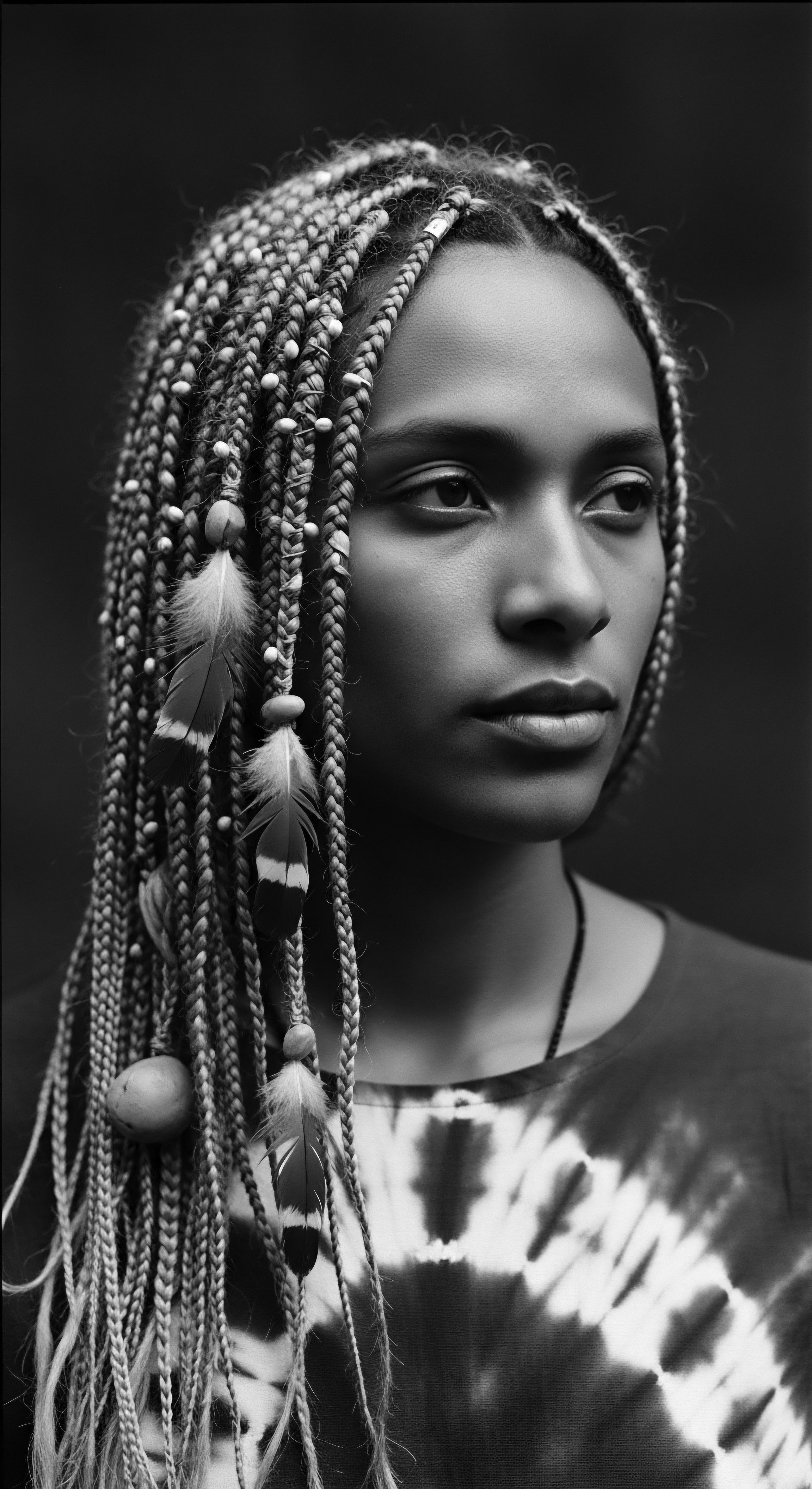
What Does Hair Anatomy Reveal About Moisture?
To truly appreciate the efficacy of braids, we first consider the hair shaft’s elemental composition. Each strand of hair, whether tightly coiled or straight, comprises three primary layers. The outermost layer, the Cuticle, functions as a protective shield, a series of overlapping, scale-like cells resembling shingles on a roof.
(Noma Sana, 2025) Beneath this lies the Cortex, the hair’s substantial middle layer, which accounts for much of its strength and elasticity. At the core, for many hair types, rests the Medulla, though it can be absent in finer strands.
For textured hair, the cuticle’s arrangement can be more lifted or less uniformly flat, a structural characteristic that, while allowing easier entry for conditioning agents, can also permit moisture to escape with greater ease. This phenomenon relates to hair Porosity, a measure of how well hair absorbs and retains water. Hair with higher porosity, common in textured types, welcomes moisture swiftly but also releases it quickly, contributing to dryness and frizz. (Noma Sana, 2025) Braids, therefore, do not fundamentally alter the hair’s inherent porosity, but rather create an external microclimate that mitigates the environmental factors exacerbating moisture loss.
Braided hairstyles serve as an ancestral solution, creating a protective sheath for textured hair that safeguards its inherent moisture.

How Have Traditional Classifications Informed Hair Care?
Historically, hair classification systems in African societies were not mere aesthetic categorizations; they were deeply rooted in cultural significance, signifying lineage, marital status, age, wealth, and spiritual connections. (Tricoci University, 2025) These classifications, though not articulated in modern scientific terms, implicitly recognized hair’s varied needs. The Himba people of Namibia, living in a particularly arid environment, developed a practice of coating their braided hair with a paste of ochre, butter, and herbs.
This traditional blend, known as ‘otjize’, offers protection against the harsh sun and helps to seal in moisture, demonstrating an intuitive understanding of environmental stressors and hair preservation long before contemporary dermatology. (Tricoci University, 2025) This ancestral approach, stemming from a profound connection to the natural world and a meticulous observation of hair’s response to its surroundings, underpins the practical knowledge that braids offer a barrier.
The very language used to describe textured hair today, while sometimes evolving from colonial biases, also carries echoes of ancestral knowledge. Terms like “kinky,” “coily,” or “wavy” describe the morphological variations that impact how moisture moves along the hair shaft. Understanding these different forms has always guided appropriate care. The knowledge, though transmitted through oral traditions and communal practice rather than scientific papers, served the same purpose ❉ to preserve the vitality of the hair.
| Hair Characteristic Coil Pattern |
| Traditional Understanding Reflected lineage, community ties, status. |
| Modern Scientific Link Determines sebum distribution; affects moisture travel along the strand. |
| Hair Characteristic Hair Porosity |
| Traditional Understanding Observed how hair absorbed natural oils and water; adapted care methods. |
| Modern Scientific Link Relates to cuticle layer structure (open vs. closed); impacts moisture retention. |
| Hair Characteristic Hair's Tendency for Dryness |
| Traditional Understanding Recognized need for regular oiling, protective coverings, and styles. |
| Modern Scientific Link Sebum struggles to coat coiled strands; increased susceptibility to trans-epidermal water loss. |
| Hair Characteristic The deep wisdom of ancestral hair practices often predates and aligns with contemporary scientific explanations for textured hair care. |

Ritual
The rhythm of braiding, a movement of hands that has shaped generations of textured hair, represents more than a styling choice; it constitutes a profound ritual of care, a legacy inherited from antiquity. This ritual, spanning continents and centuries, finds its power in the physical act of intertwining strands, creating a contained environment that directly addresses the unique needs of coiled hair. The very structure of a braid provides a physical barrier, minimizing external exposure and thereby mitigating moisture loss. This section unpacks how these traditional techniques, steeped in communal practice, offer both aesthetic beauty and profound protective benefits.

How Do Braids Create a Microclimate for Moisture?
At its heart, braiding is a method of enclosure. Each individual hair strand, particularly the delicate ends, which represent the oldest and most fragile parts of the hair, is tucked away within the woven structure. (Mayvenn, 2020; African Naturalistas, 2024) This containment offers several advantages for moisture preservation. The tightly packed strands within a braid reduce the surface area of the hair exposed to the elements ❉ wind, sun, and dry air.
These environmental factors are notorious for drawing moisture from hair, leaving it brittle and prone to breakage. When braided, the hair is less susceptible to these external forces, acting as a kind of self-contained ecosystem.
Consider the analogy of a natural spring in a shaded grove. The coolness and humidity beneath the canopy preserve the water, protecting it from direct sun and drying winds. Braids function similarly, maintaining a more stable and humid environment for the hair shaft than if the strands were left unbound.
This reduced exposure translates directly into less evaporation of the natural oils and applied moisturizers, allowing the hair to remain hydrated for longer periods. It also shields the hair from daily wear and tear, reducing friction that can lift the cuticle and further compromise moisture retention.

What Ancestral Roots Do Protective Styles Hold?
The tradition of protective styling, especially braiding, reaches back thousands of years. Archeological discoveries suggest hairstyles resembling cornrows date back to 4500 BC. (Belle Beauty Hacks, 2025) These styles were not merely fashionable but served practical purposes within daily life and during significant cultural events. For communities navigating diverse climates, from the arid Sahel to humid coastal regions, braids offered a tangible solution to hair management and preservation.
In many West African societies, the art of hair braiding was a communal activity, a social rite where women gathered, shared stories, and passed down techniques through observation and participation. This act of collective styling reinforced communal bonds while ensuring the continuation of practical hair knowledge. The styles themselves often held symbolic weight, communicating complex social codes and even, as some speculate, serving as maps for escape routes during periods of enslavement, with seeds sometimes braided into the hair to be planted later for sustenance. (Salford Students’ Union, 2024) This heritage underscores that hair care, through braids, was interwoven with survival and communication.
The intricate art of braiding, a time-honored practice, transforms hair into a shielded sanctuary against moisture loss and environmental stressors.
The continuity of these practices, from ancient African kingdoms to contemporary Black and mixed-race communities globally, testifies to their enduring efficacy. Even today, the decision to wear braids often stems from a desire to safeguard hair health, echoing the wisdom of ancestors who understood the protective power of these styles.
- Cornrows ❉ One of the oldest and most recognizable styles, braided close to the scalp, often signifying lineage and status in Yoruba culture.
- Box Braids ❉ Originating in South Africa at least 5,000 years ago, used to signal marital status and economic standing.
- Twists ❉ Including Senegalese and Marley twists, these variations also enclose hair, reducing exposure and manipulation.
- Bantu Knots ❉ A style that sections and twists hair into small knots, protecting ends while also stretching curls.

Does Braiding Technique Influence Moisture Retention?
The way a braid is installed plays a significant role in its ability to prevent moisture loss and, crucially, to safeguard hair health. Proper technique ensures the hair is not subjected to undue tension, which can lead to breakage and scalp irritation. (Livara Natural Organics, 2024; Clinic Hunter, 2025) When braiding, hair should be clean and adequately moisturized prior to styling.
(Taliah Waajid, 2021) Applying a leave-in conditioner or light oil before braiding can enhance moisture retention within the style. (Taliah Waajid, 2021)
Too tight braids compromise the very protective benefits they are meant to provide. Excessive tension can strain hair follicles, leading to thinning, particularly around the hairline, a condition known as Traction Alopecia. (Clinic Hunter, 2025) The aim is a gentle yet secure hold that allows the hair to rest within its braided cocoon, not a tautness that causes discomfort or bumps on the scalp.
This thoughtful approach ensures the longevity of the style and the sustained vitality of the hair beneath. The legacy of braiding is not merely about form, but about the gentle, patient hands that honor the strands within.
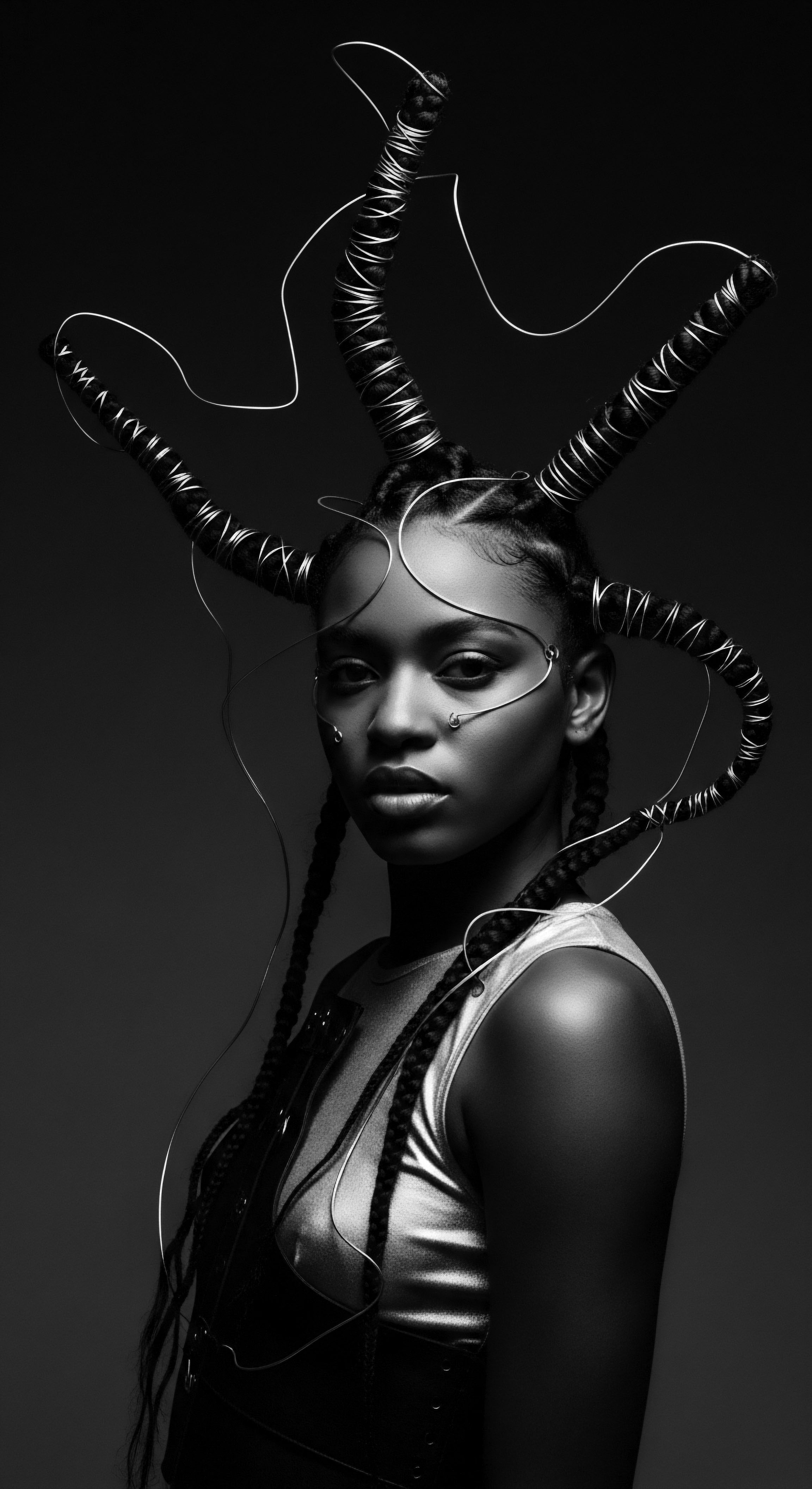
Relay
The legacy of braided hairstyles as guardians of moisture for textured hair extends far beyond simple aesthetics; it embodies a sophisticated understanding of hair biology, ancestral wisdom, and the interplay between internal wellness and external care. This knowledge, passed down through generations, now finds validation and deeper explanation through modern scientific inquiry. We consider how this historical practice relays essential lessons for contemporary holistic hair care, ensuring the continued vitality of textured hair as a symbol of identity and resilience.

How Do Braids Minimize Mechanical Stress and Moisture Loss?
Textured hair, by its very nature, possesses a unique cuticle structure. Its coiled shape results in more points of contact between individual hair strands, leading to a greater propensity for tangling and friction. This increased friction can cause the cuticle scales to lift, accelerating moisture evaporation and making the hair vulnerable to mechanical damage. (ICM CBQ) When hair is braided, these individual strands are gathered and secured.
This significantly reduces daily manipulation—combing, brushing, styling—which are common sources of friction and breakage for unbound textured hair. (African Naturalistas, 2024)
The reduction in manipulation means that the hair’s internal moisture, whether naturally present or introduced through products, has fewer opportunities to escape. The sealed environment within the braid helps to stabilize the hair’s moisture content, providing a buffer against the drying effects of environmental exposure such as harsh winds or dry indoor air. This preservation of moisture contributes directly to the hair’s elasticity and strength over time, minimizing brittleness and split ends. Dr.
Audrey Davis-Sivasothy, in The Science of Black Hair, underscores the importance of maintaining proper moisture balance to combat dryness, which is a prevalent issue for textured hair due to the challenges natural sebum faces in traveling down the coiled shaft. (Davis-Sivasothy, 2011; Bookey, 2023)
Braids act as a shield, minimizing daily environmental exposure and physical manipulation, which are primary culprits in moisture depletion for textured hair.
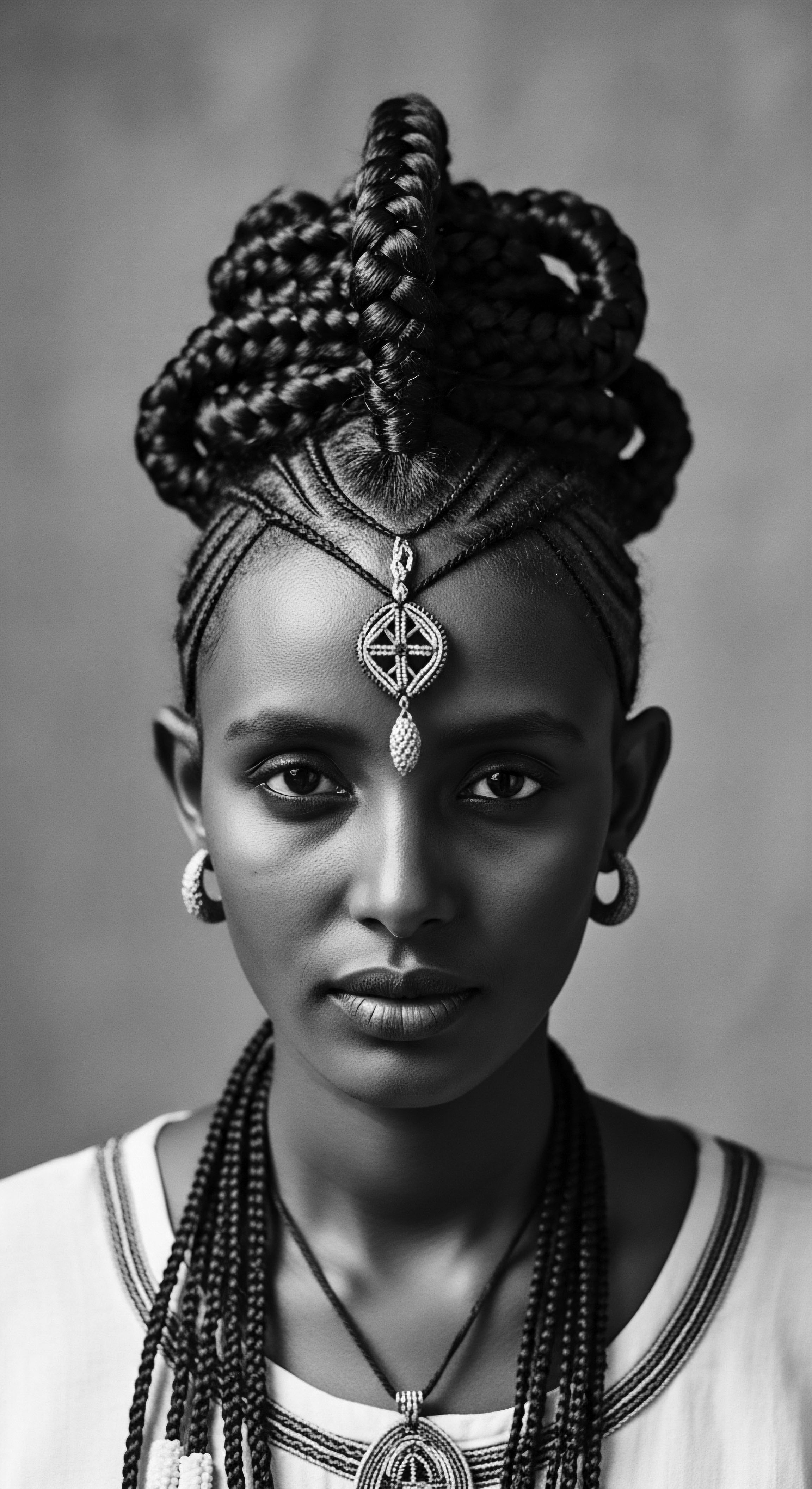
How Does Braiding Promote Hair Health Beyond Moisture?
Beyond moisture retention, braiding offers a period of rest for the hair shaft and follicles. Consistent daily styling, especially with heat tools, can weaken hair bonds and lead to cumulative damage. Braids provide a reprieve, allowing the hair to grow undisturbed for extended periods.
This reduced strain can lead to significant length retention, as the hair is less prone to the breakage that often negates natural growth. (African Naturalistas, 2024)
The practice of protective styling, of which braiding is a cornerstone, has long been a strategy for preserving hair length within Black communities. This is evident in historical accounts where women, despite the harsh realities of enslavement, continued to devise methods to preserve their hair, often using whatever natural ingredients were available to moisturize and protect. (Salford Students’ Union, 2024) These methods included applying oils and butters like shea butter and coconut oil, which form occlusive barriers on the hair surface, further sealing in moisture when combined with the protective structure of braids. (Salford Students’ Union, 2024; MDEdge, 2025)
| Mechanism Reduced Surface Area Exposure |
| Scientific Principle Minimizes evaporation of water from hair shaft; limits environmental stressors. |
| Mechanism Physical Barrier |
| Scientific Principle Protects cuticle from external abrasion and friction that lead to moisture loss. |
| Mechanism Controlled Microclimate |
| Scientific Principle Maintains higher humidity around hair, slowing moisture diffusion from the strand. |
| Mechanism Less Manipulation |
| Scientific Principle Decreases mechanical stress and breakage, preserving hair integrity and moisture. |
| Mechanism The strategic bundling of hair in braids creates an optimal environment for preserving hydration and overall strand vitality. |

What Role Do Traditional Ingredients Play in Braided Care?
The efficacy of braided styles is often amplified by the intelligent use of traditional moisturizing and sealing agents. Before braiding, hair is frequently prepped with rich creams, butters, and oils. These substances, often derived from indigenous plants, provide a layer of external lubrication and a hydrophobic barrier that helps to prevent water loss from the hair shaft. For example, traditional African hair care practices utilized natural oils like Shea Butter and Coconut Oil, along with animal fats, to moisturize and shield hair from harsh conditions.
A noteworthy case illustrating the fusion of traditional knowledge and modern validation is found in the widespread use of certain botanicals. For instance, ethnobotanical studies in Africa have identified numerous plant species used for hair and skin health. Research on African plants for hair care, while scarce in formal ethnobotanical studies compared to other areas, indicates the use of various herbs for conditioning and growth. (MDPI, 2024) The leaves of plants like Sesamum Orientale L. have been traditionally used for hair cleansing and styling in regions such as Ethiopia, suggesting an inherent understanding of their benefits.
(Ethnobotany Research and Applications, 2025) This underscores a long-standing heritage of incorporating nature’s offerings into hair care rituals. When applied before braiding, these substances remain entrapped within the protective style, providing sustained conditioning.
The synergy between the physical structure of the braid and the nourishing properties of these historical ingredients creates a powerful mechanism for moisture retention. This holistic approach, passed down through the ages, reveals a profound, intuitive science at play in the ancestral care of textured hair. It’s a testament to the fact that optimal hair health is not a new discovery, but a continuous dialogue with the wisdom of the past.
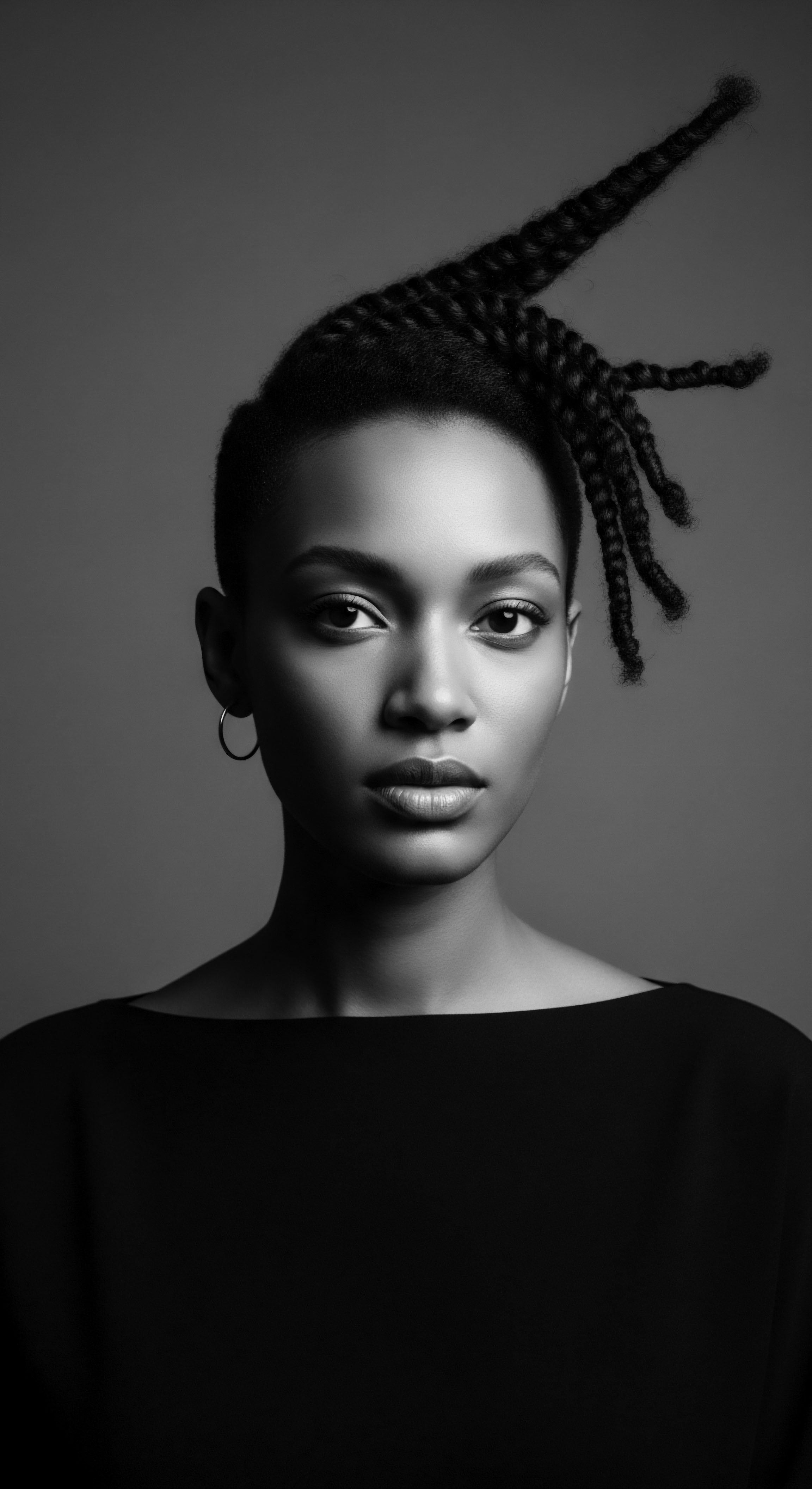
Reflection
The journey through the intricate world of braided hairstyles and their profound ability to shield textured hair from moisture loss brings us to a compelling realization ❉ this practice is far more than a mere styling technique. It is a living artifact, a testament to the enduring ingenuity and profound wisdom embedded within Black and mixed-race heritage. Each carefully intertwined strand carries echoes of ancestral hands, of communal gatherings where knowledge was shared, and of a deep-seated respect for the hair as a sacred crown.
To understand how braids retain moisture is to acknowledge a lineage of preventative care, born of necessity and elevated to an art form. It points to an intuitive, centuries-old scientific understanding of hair’s delicate balance, long before laboratories quantified cuticle integrity or trans-epidermal water loss. The very act of braiding provides a physical sanctuary, a controlled environment that allows the hair to thrive, protected from the relentless pull of environmental factors and the stress of daily manipulation. This sustained protection, coupled with the legacy of incorporating natural, conditioning elements, speaks to a holistic approach that views hair health as an inseparable part of overall wellbeing.
As we look upon braided styles today—whether worn for protection, beauty, or cultural expression—we witness a continuous relay of ancestral knowledge into modern life. They remind us that the solutions for our textured strands often lie in the patient rhythms of our forebears, in the quiet wisdom of practices that have guarded our coils for generations. It is a timeless narrative, continually unfolding, reminding us that every strand holds a soul, a story, and a powerful connection to a heritage of resilience and radiant beauty.
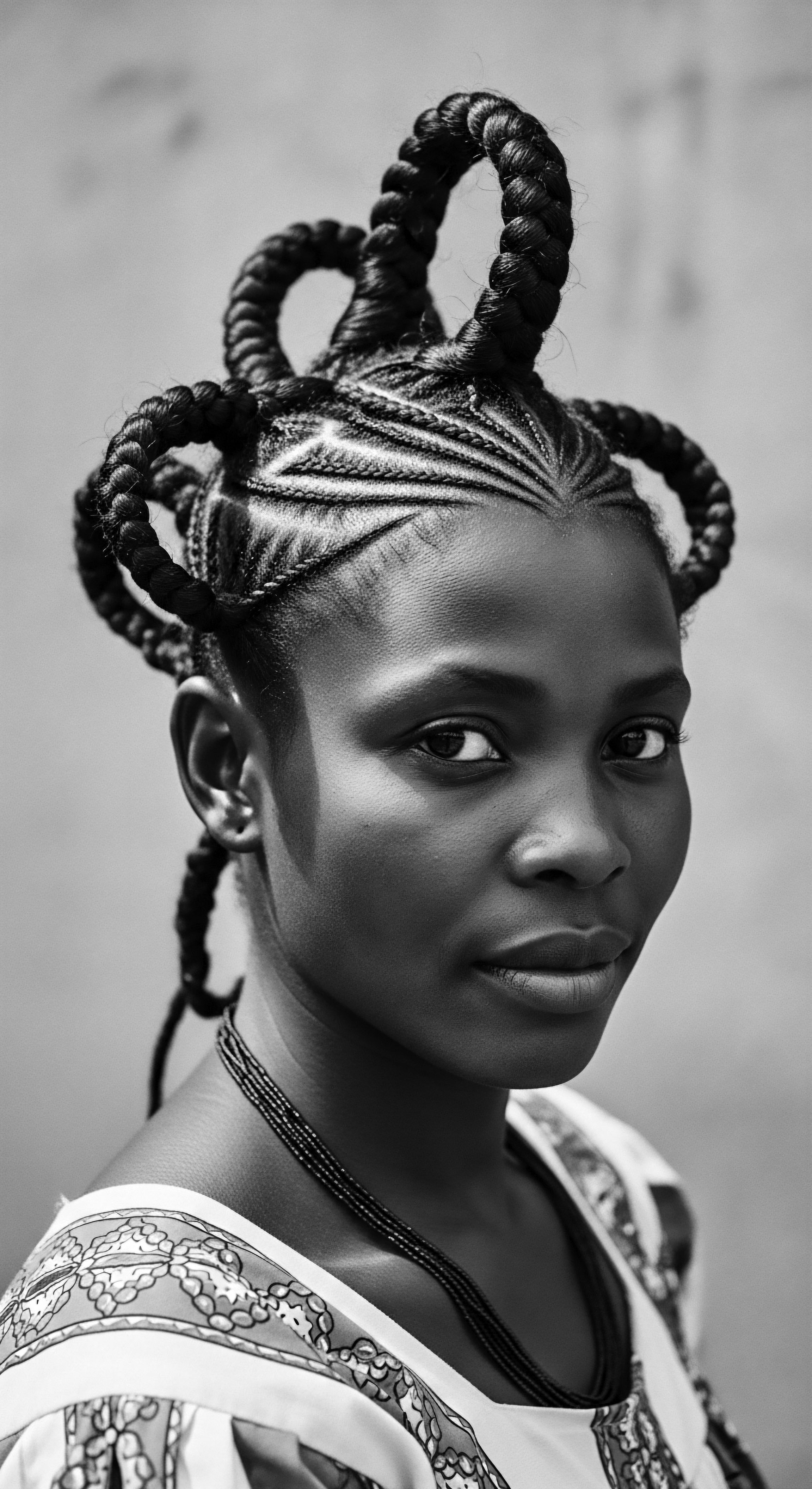
References
- Byrd, A. & Tharps, L. (2001). Hair Story ❉ Untangling the Roots of Black Hair in America. St. Martin’s Griffin.
- Davis-Sivasothy, A. (2011). The Science of Black Hair ❉ A Comprehensive Guide to Textured Hair Care. Sivasothy Publishing.
- Livara Natural Organics. (2024). How to Prevent Hair Breakage from Braids and Twists.
- Cosmébio. (2024). Hydrating and Caring for Curly Textured Hair.
- Noma Sana. (2025). Understanding Hair Porosity ❉ What It Means for Your Textured Hair.
- Clinic Hunter. (2025). Do Braids Cause Hair Loss? What You Need to Know.
- ICM CBQ. (n.d.). Style and Finish Hair using a Range of Techniques.
- African Naturalistas. (2024). 6 Healthy Hairstyles for Hair Growth and Length Retention.
- Salford Students’ Union. (2024). The Remarkable History Behind Black Hairstyles.
- Ethnobotany Research and Applications. (2025). Plants used for hair and skin health care by local communities of Afar, Northeastern Ethiopia.
- MDPI. (2024). Cosmetopoeia of African Plants in Hair Treatment and Care ❉ Topical Nutrition and the Antidiabetic Connection?
- Belle Beauty Hacks. (2025). 13 Must-Try Summer Protective Hairstyles for 2025.
- Tricoci University. (2025). The Art & Business of African Hair Braiding ❉ A Guide for Modern Cosmetologists.
